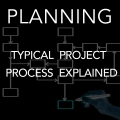Architecture is one of the most intense university courses one can pursue. Chelsea Doorne, a fourth year Master of Architecture student, shines a torch on the dark side of the architecture student experience.
Architecture school and dedication are synonymous, however more often than not, this devotion to the art of design comes at a cost.
A recent survey conducted by the Architects Journal documented that 1 in 4 architecture students are suffering from mental health issues, with a further 26% stating that they would likely seek treatment and professional help in the future. This is hardly surprising given that when searching ‘architecture student’, images of solitary students crouched over models are accompanied by a smattering of ‘memes’ depicting feelings of rejection, chaos, and most predominantly, forced insomnia. This deeply embedded culture of overworking and negativity is one of the primary reasons why mental health is such a prevalent issue within the architectural student community.
Long hours are one of the most recognisable traits of the architecture student community, with almost 1 in 3 students reporting that they work through the night on a regular basis. This common place experience of sleep deprivation within architecture school is widely known and also referenced by a number of blogs such as architorture school. Among students, stating your longest time awake can become akin to a competition, and often be seen as an implied level of success in the studio realm. This normalising of nocturnal study isn’t just supported by students, with there being an expectation to work throughout the night imposed by many tutors. The large workload of the degree, noted as being one of the heaviest, can also contribute to the frequency of ‘all-nighters’ with the design process demanding an unquantifiable number of hours. It is common for a designer to feel that the process is never truly complete, even when the final deadline has long passed. With one often feeling as though a large amount of improvements which can be made, unlike a finance report, for instance, which is completed when all the data has been entered.
The ever present threat of time, or lack thereof, is added to by the expectation of students to work part time in firms to gain experience and in the case of some universities, it is a requirement for graduation. In a course where, particularly at Masters level, most timetables demand the full five days of study, many students are skipping classes to satisfy these demands. The high requirement of these hours along with the prevalence of some internships that (illegally) pay in ‘experience’ over money, lead to many students experiencing financial difficulties throughout their degree. Although the job market for architects is currently looking positive, it is also highly competitive and many universities no longer offer study placement programs, making these positions increasingly difficult to secure. This stress of gaining necessary, yet difficult to find experience, coupled with the already stressful study period is a large contributing factor to the poor mental health of architecture students.
These monetary stresses extend into the cost of study which is notoriously expensive. While university text books are expensive across the board, the constant need to print and construct models can often blow an already tight student budget, with some models costing in excess of $300, and printing frequently exceeding $100 per presentation. These expenses (coupled with expensive software, computers and the cost of travel for site visits), can force many students to switch to a part-time load, adding time to an already lengthy degree.
“The overarching costs of the degree as a whole, when coupled with poor pay and employment prospects, paint a bleak outlook for the average architecture student.”
The critique or design review of the architecture degree is well known from day one in architecture school, and the negative stigma that surrounds it is intrinsically linked to the design culture. Design is not as simple as a yes or no answer that can be found in other faculties, such as engineering, instead, it is subjective, leading to confusion between a critic’s opinions versus how the project is received in the studio class among tutors. These critiques are feared throughout the faculty and many students accept that they will often receive a bad comment or a terrible review, regardless of the number of hours and effort devoted to a design proposal. Design is an intensely personal endeavour and is not too dissimilar to an art piece, with heart, soul, sweat and tears being poured into a project. This brings an additional intensity to the critique process and makes a negative reception much more distressing. To those students who are already suffering from mental illness, the toll can be devastating, particularly when coupled with running on little-to-zero sleep, often poor nutrition and an already volatile state of mind, this can only lead to negative outcomes for the student.
It is not uncommon to see a shift in the demeanour of students throughout the semester. Ask someone how they are in the early weeks is answered with an upbeat, “great”, or “looking forward to the semester” or something of the like. Ask the same person in week 7 and you’re looking at a less than jovial response. They’re likely either “tired”, or just “fine”. This dramatic shift in attitude in less than two months is sadly commonplace among students.
One of the primary issues with this negative ethos of studio critique is that it is deeply rooted in architecture culture and widely accepted, if not expected. The critics of today do not feel it is an overly harsh response as they were treated the same in their time at architecture school, much like their tutors before them. It is normalised and expected that tears and breakdowns will follow a critique and this is where the issue lies. Yes, we need to be prepared for the inevitable future of practice which may involve an imposing director and a less than content client. However when students are learning, this breaking of their spirit through a ruthless critique does little more than demotivate and encourage a negative outlook in the architecture field, contributing to the low mental health state throughout the faculty.
Until this cycle of pessimism and demoralisation is broken, we can only expect that the mental health of architecture students will continue to be poor, particularly when a bleak economic outlook is added into the mix for future candidates.
Further reading:
http://www.lifeofanarchitect.com/mental-health-awareness-for-the-architecture-student/
Professor Peter Raisbeck writes an excellent blog covering some of these issues
5 ways architecture students can avoid a mental health meltdown
Important: If you are experiencing depression, anxiety or other mental health issues, make sure you get help from your general practitioner or organisations such as The Black Dog Institute or Headspace.
About the Author
Chelsea Doorne is a Masters of Architecture student and an architectural assistant at Atelier Red + Black. Chelsea can be found on Instagram @snarchitekt
Architecture is for everyone





Interesting and enjoyable piece!
I’d like to focus on a couple of points made.
The first is about a student’s bank account. I see it as a bit of a puzzle similar to how you’ve presented it. Work in hospitality is good because of the penalties over xmas/summer break. There is usually daylight in the skill levels between those that work in practice though against those that don’t. Shifting to work in practice reduces earning capacity (if there were penalties available) and the construction industry shuts down over xmas. Not good for students.
Week to week the bank account can be slim, but semesterly ‘shocks’ such as printing or the inevitable laptop upgrade are out of reach for many which again is an important point that you raise.
So students HAVE to work to survive. Nothing new here. What is the cost though? I would argue that it’s the quality of learning.
If students do finally commit themselves 110% in their final year but still fail, is it because they needed 120%, or because they needed 100% three or four or five years earlier?
I wonder if there isn’t a role for a body that is neither the federal government nor one’s parents to play to further support architecture students financially. The idea being that in turn there is opportunity for far greater commitment from students to their learning.
For years I’ve been saying that Architecture School in Australia is like being trapped on “The Isle of Dr Moreau”
It takes many years to revert back and find your natural animal state after all that torture.
Hugs
Gaz